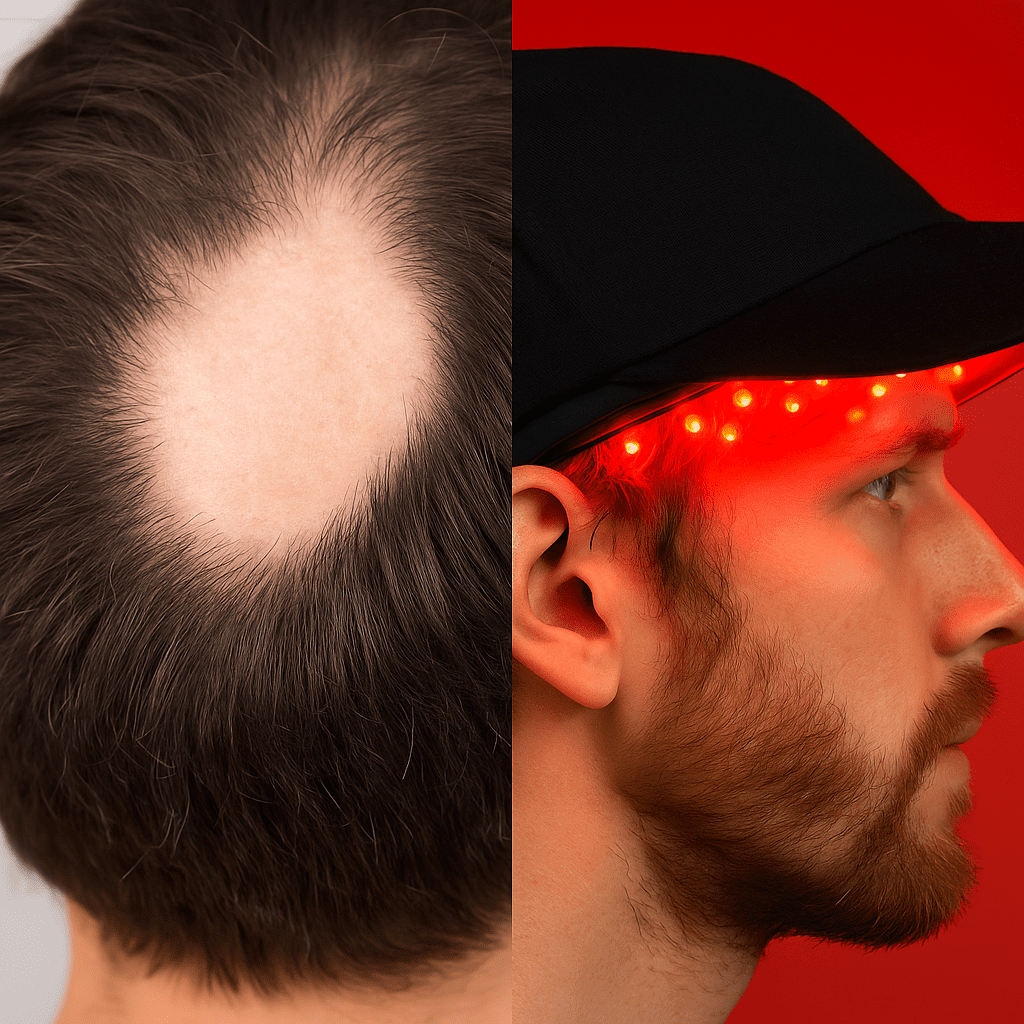At the core of red light therapy’s effect is the mitochondrion — the powerhouse of the cell. Hair follicles, especially those in the anagen (growth) phase, are metabolically active and require significant cellular energy to function properly. Red light therapy delivers wavelengths typically in the 630–670 nm (red) and 800–850 nm (near-infrared) ranges. These wavelengths penetrate the scalp and are absorbed by cytochrome c oxidase, a key enzyme in the mitochondrial respiratory chain.
When this enzyme absorbs light, it increases ATP (adenosine triphosphate) production — essentially, it fuels the cells. This burst of energy supports the proliferation of keratinocytes, the cells responsible for forming hair shafts. It also improves blood flow to the scalp, delivering more oxygen and nutrients to dormant or weakened follicles.
Importantly, red light therapy also helps regulate inflammatory cytokines. Chronic low-grade inflammation can contribute to hair loss, especially in conditions like androgenetic alopecia. By reducing inflammation, red light creates a more favourable environment for hair to grow.
Several studies back these mechanisms. One double-blind placebo-controlled study published in Lasers in Surgery and Medicine found that participants who used red light helmets for 16 weeks saw significantly increased hair density compared to the placebo group.
Another key benefit? Unlike drugs such as finasteride or minoxidil, red light therapy doesn’t interfere with hormonal pathways. This means it’s side-effect free for most people and can even be used in combination with other treatments.
Results aren’t instant. Users typically report seeing reduced shedding and baby hairs around 8–12 weeks, with more visible results at the 16–24 week mark depending on the severity of hair loss and consistency of use.





